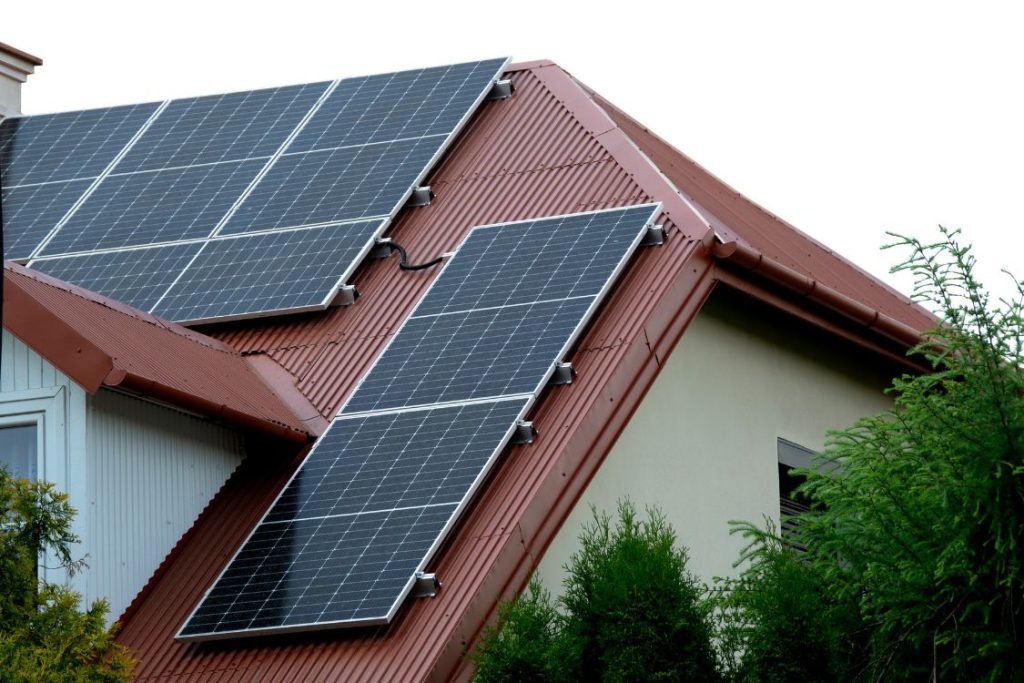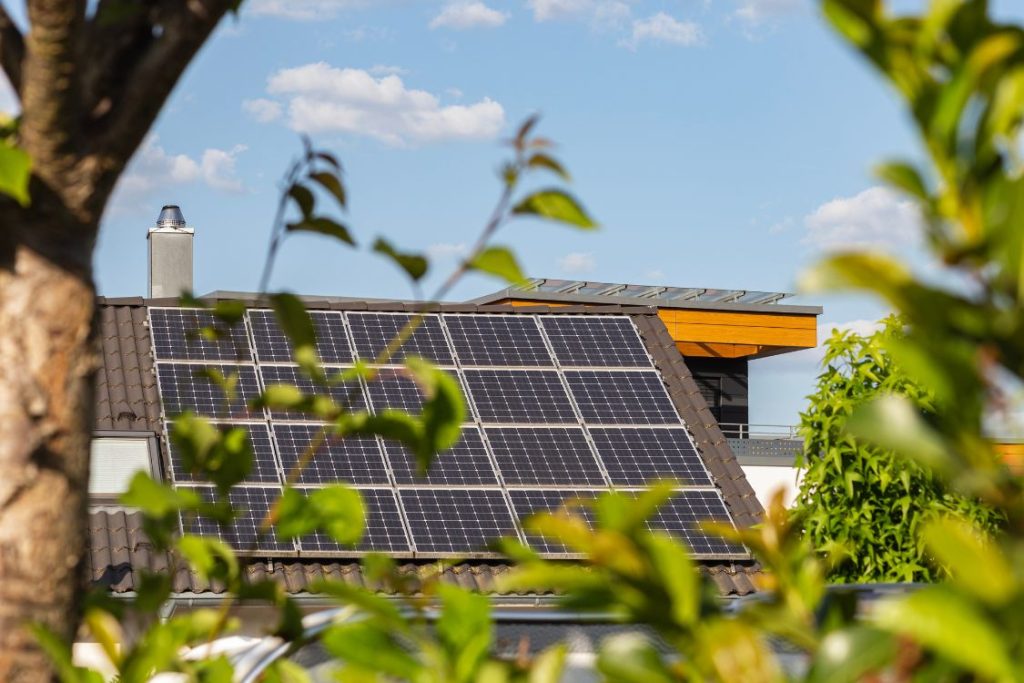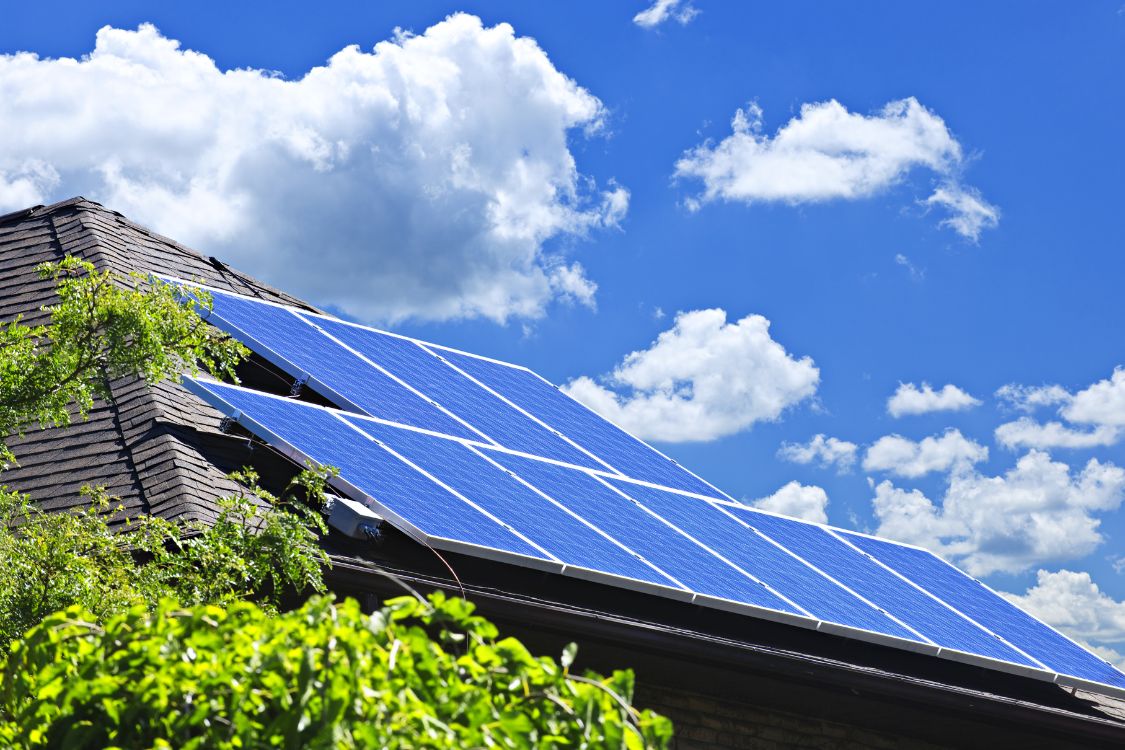Solar Panels: Transforming Homes with Green Energy
Are solar panels the transformative solution every home needs for a greener future, or are they just another fleeting trend in sustainable living? As the world confronts increasing energy demands and environmental concerns, it’s essential to understand how solar panels may change our domestic landscapes. With photovoltaic panels harnessing solar energy, these installations promise a clean, efficient, and cost-effective solution to power our homes. This article delves into the intricacies of solar panel technology, functionality, and the choices available, positioning solar panels as a pivotal component in the quest for sustainable living.
Understanding Solar Panels: Technology and Functionality
Solar panels, central to the adoption of renewable energy, utilise photovoltaic (PV) technology to convert sunlight into electricity. This process involves the movement of electrons within solar cells when exposed to sunlight, generating an electric current. Photovoltaic systems comprise interconnected solar cells, forming panels and arrays that capture and convert solar energy efficiently.
The core of a solar panel is the solar cell, which consists of several critical components. Each cell contains a metal conductive plate, a silicon semiconductor layer, an anti-reflective coating, and a metal grid for collecting electrons. These components work together to absorb sunlight, excite electrons, and create a flow of electricity. The silicon semiconductor is vital, as it facilitates electron movement, while the anti-reflective coating maximises light absorption by minimising reflection.
Different types of solar cells are used in panels, including polycrystalline, monocrystalline, and thin-film, each offering unique advantages and trade-offs.
- Polycrystalline Cells: Efficiently convert 13-17% of solar energy into electricity. They are cost-effective, making them a popular choice for residential installations.
- Monocrystalline Cells: Offer higher efficiency, ranging from 15-19%, resulting in greater energy output for the same surface area. They are more expensive due to the manufacturing process.
- Thin-Film Cells: Provide flexibility for non-traditional surfaces, with efficiencies typically between 5-8%. They are less efficient but versatile in application.
Understanding these components and types is essential for selecting the right solar panel system, balancing efficiency, cost, and application needs.
Types of Solar Panels: Choosing the Right Option
Solar panels in Scotland come in various types, each with distinct characteristics suitable for different applications. The three primary types are monocrystalline, polycrystalline, and thin-film panels. Each offers unique benefits and considerations in terms of efficiency, cost, and application.
Monocrystalline Solar Panels
Monocrystalline panels are known for their high efficiency and sleek appearance. They typically offer efficiency rates between 15-19%, making them one of the most effective options for energy generation. Their uniform black colour and compact design are aesthetically pleasing, which is an added advantage for residential installations. Although monocrystalline solar panels come with a higher cost due to their complex manufacturing process, they provide excellent energy output and space efficiency, making them ideal for homes with limited roof space.
Polycrystalline Solar Panels
Polycrystalline panels provide a cost-effective alternative to monocrystalline options. While they are slightly less efficient, with rates ranging from 13-17%, they are generally more affordable, making them popular for budget-conscious consumers. These panels have a bluish hue and a more speckled appearance due to the multiple silicon crystals used in their construction. Polycrystalline solar panels are suitable for installations where roof space is not a constraint, allowing homeowners to achieve substantial energy savings without incurring high upfront costs.
Thin-Film Solar Panels
Thin-film panels offer flexibility and adaptability for various applications, including unconventional or curved surfaces. Though they have the lowest efficiency rates, typically between 5-8%, their lightweight and flexible nature make them practical for specialised uses. Thin-film panels are often utilised in commercial settings or on surfaces where traditional panels might not be feasible. While not the best choice for maximising energy output, their unique properties make them valuable in specific scenarios where flexibility is paramount.
Solar Panel Installation and Costs

Installing solar panels in the UK typically costs about £9,600. The process, from the initial inquiry to completion, can take up to six weeks, although the actual installation itself is completed within four to five hours. The total cost is influenced by several factors, including the type of solar panels chosen, their wattage, and the manufacturer’s pricing.
Factors affecting installation suitability and costs:
- Roof Space: Adequate roof space is essential to accommodate the necessary number of panels for effective energy generation.
- Sunlight Availability: Locations with higher sunlight exposure contribute to greater efficiency and energy yield.
- Structural Considerations: The roof’s structure must be capable of supporting the weight of the solar panels, with some older roofs possibly requiring reinforcement.
- Panel Type and Wattage: Different types of panels and their wattage impact both the efficiency and cost of the installation.
To alleviate the financial burden of installing solar panels, homeowners can explore various grants and financing options available in the UK. These financial aids aim to reduce the initial investment, making it easier for homeowners to adopt renewable energy solutions. For a typical three-bedroom house, around 12 solar panels are required to create a 4.5kW system, which sufficiently meets most energy needs while maximising cost-effectiveness and energy savings.
Benefits and Drawbacks of Solar Panels
Solar panels offer numerous benefits, both environmentally and financially, making them an attractive option for homeowners looking to embrace renewable energy. By installing solar panels, households can expect to see a significant reduction in electricity bills, with typical savings reaching up to £660 annually. Additionally, solar panels play a crucial role in decreasing carbon emissions, with the potential to reduce a home’s carbon footprint by approximately 1 tonne each year. These environmental advantages align with growing global initiatives aimed at mitigating climate change and promoting sustainable living.
However, adopting solar energy is not without its challenges. There are certain drawbacks that homeowners need to consider:
- High Initial Costs: The upfront investment required for solar panel installation can be substantial, posing a financial challenge for many homeowners.
- Efficiency Variability: Solar panel efficiency can vary based on factors such as weather conditions, geographic location, and the orientation of the panels, impacting the overall energy output.
- Space Requirements: Adequate roof space is necessary to install a sufficient number of panels to meet energy needs, which may not be feasible for all homes.
Despite these drawbacks, solar panels offer long-term financial benefits. With an average lifespan of about 25 years, they provide a sustainable solution to reduce ongoing electricity expenses. The average break-even point is around 10.8 years, after which homeowners can enjoy substantial savings. The combination of reduced energy bills and environmental impact makes solar panels a worthwhile investment for those committed to a greener future.
Solar Panel Efficiency and Performance
Solar panel efficiency in the UK typically ranges from 15% to 24%, with the most advanced panels achieving efficiencies above 22%. These percentages represent the portion of sunlight that can be converted into usable electricity. The efficiency of solar panels is influenced by several factors, including the type of solar cells used, the orientation and tilt of the panels, and prevailing environmental conditions such as temperature and shading.
Improving solar panel efficiency involves several strategies:
- Optimal Orientation and Tilt: Ensuring that solar panels are positioned to receive maximum sunlight exposure. In the UK, this often means facing panels south at an angle of 30° to 40°.
- Regular Maintenance: Keeping panels clean and free of dust or debris to enhance light absorption and overall performance.
- Use of High-Efficiency Panels: Selecting panels with higher efficiency ratings, like monocrystalline panels, which offer better performance in limited space.
Technological advancements are continually refining solar panel performance. Innovations in materials and manufacturing techniques have led to increased efficiencies and lower costs. New developments are focusing on enhancing the photovoltaic effect, which could further boost the energy output of solar panels. These improvements make solar panels a more viable solution for residential energy needs, offering both economic and environmental benefits over their operational lifespan.
Financial Incentives and Savings with Solar Panels

The Smart Export Guarantee (SEG) is a significant financial incentive for UK homeowners investing in solar panels. It allows them to earn up to £320 annually by exporting surplus energy back to the grid. This scheme not only provides a steady income stream but also encourages the adoption of solar energy by offsetting some of the initial installation costs. By participating in SEG, homeowners can make better use of their solar systems, enhancing financial returns and promoting sustainable energy consumption.
Available grants and eligibility criteria:
- Low-Income Households: Specific grants target households on certain benefits, offering financial assistance to lower the upfront costs of solar panel installation.
- Energy Efficiency Schemes: Some schemes are designed to improve energy efficiency in homes, including support for solar panel installations as part of broader energy-saving measures.
- Local Council Initiatives: Various local councils provide additional incentives or rebates to encourage residents to switch to renewable energy sources, including solar panels.
These financial incentives play a crucial role in reducing the initial costs associated with solar panel installations, thereby accelerating the break-even point for homeowners. With the help of grants and the SEG, the period required to recover the investment costs through energy savings is shortened, leading to greater long-term financial benefits. By reducing electricity bills and earning from surplus energy, these incentives make solar panels an economically viable option for many UK households.
Environmental Impact and Recycling of Solar Panels
Solar panels play a critical role in reducing carbon emissions and advancing clean energy initiatives. By harnessing energy from the sun, solar panels can substantially decrease a home’s carbon footprint, with an average reduction of approximately 1 tonne annually. This shift towards renewable energy sources not only helps mitigate climate change but also contributes to a more sustainable future by lessening dependence on fossil fuels.
Recycling regulations and practices for solar panels include:
- EU Recycling Mandates: European Union regulations require that solar panel installers recycle obsolete panels responsibly, ensuring that environmental impact is minimised.
- Cost-Free Recycling: Homeowners benefit from no-cost recycling services, as mandated by EU directives, which obligate manufacturers to handle the lifecycle of the panels.
- Sustainable Materials Management: Recyclable materials within solar panels, such as glass, aluminium, and certain metals, are reclaimed and reused, supporting circular economy principles.
Through these recycling practices, solar panels significantly contribute to sustainability by reducing waste and promoting resource efficiency. The responsible disposal and recycling of solar panels not only prevent environmental degradation but also ensure that the materials are repurposed, supporting ongoing clean energy efforts and reducing the ecological footprint of solar technology.
The Future of Solar Energy
The UK government is ambitiously aiming to triple the country’s solar power capacity by 2030. This goal reflects a strong commitment to increasing the use of renewable energy sources and reducing reliance on fossil fuels. By expanding solar capacity, the government seeks to lower carbon emissions and contribute to a more sustainable energy infrastructure, enabling a wider adoption of solar energy across residential and commercial sectors.
Innovations in solar technology are pivotal to achieving these targets. Continuous advancements are enhancing the efficiency and affordability of solar panels, making them accessible to a larger segment of the population. Improvements in material science and manufacturing processes have led to the development of more efficient solar cells, which are capable of converting sunlight into electricity with higher precision and lower costs. As solar farms continue to expand, they play a crucial role in supporting this sustainable energy future, offering scalable solutions that complement individual household installations and reinforce the national grid’s capacity for renewable energy.
Final Words
Exploring the intricacies of solar panels unveils a cleaner, cost-effective energy future. Delving into photovoltaic technology, identifying the appropriate solar panel types, and understanding installation costs form the crux of informed solar adoption. Each solar variant offers specific efficiencies, with monocrystalline panels leading the charge.
Acknowledging upfront costs, solar panels quickly repay investments through energy savings and environmental benefits. Considering financial incentives enhances affordability, while recycling efforts fortify sustainability. With continued advancements in solar efficiency, the environmental impact is set to diminish further.
Adopting solar panels ushers in not only significant energy savings but also a substantial reduction in carbon emissions, paving the path towards a greener world.

William is a writer specializing in international relations and diplomatic affairs. His work focuses on analyzing global policies, fostering cross-cultural understanding, and providing insights into diplomatic strategies and developments.
